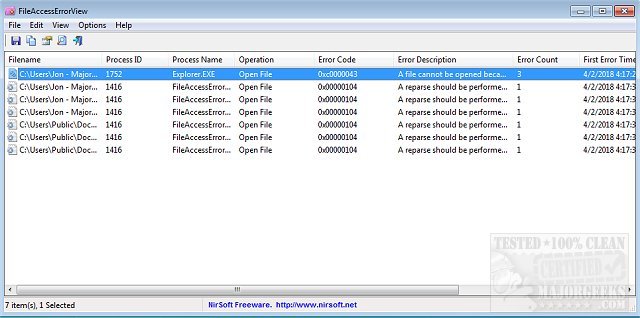FileAccessErrorView reveals error details that can potentially occur when a program attempts to open/read/write/delete a file.

Download
FileAccessErrorView reveals error details that can potentially occur when a program attempts to open/read/write/delete a file.
This portable diagnostic tool scans your system then promptly displays the filename that the application attempted to open/read/write/delete, the app process id/name, the accompanying error code (NTSTATUS code), the description of the error code, the number of instances the error occurred, and the timestamp of the error. All details are provided in a user-friendly interface characteristically provided by NirSoft.
By default, FileAccessErrorView will ignore the following error codes, because they frequently appear in programs that normally run without issues. They are as follows; 0xc0000034 (The object name is not found), 0xc0000035 (The object name already exists.), 0xc00000ba (The file that was specified as a target is a directory, and the caller specified that it could be anything but a directory.). And 0xc0000011 (The end-of-file marker has been reached. There is no valid data in the file beyond this marker.), 0xc000003a (Path Not Found).
If you don't want to skip these errors, you can turn off the 'Skip Common Errors' option (Under the Options menu).
FileAccessErrorView will be a useful tool for keeping track of any errors that occur during its outlined target search areas and all details are easily saved to TXT, JSON, CSV, HTML, HTM, or XML formats

Download

